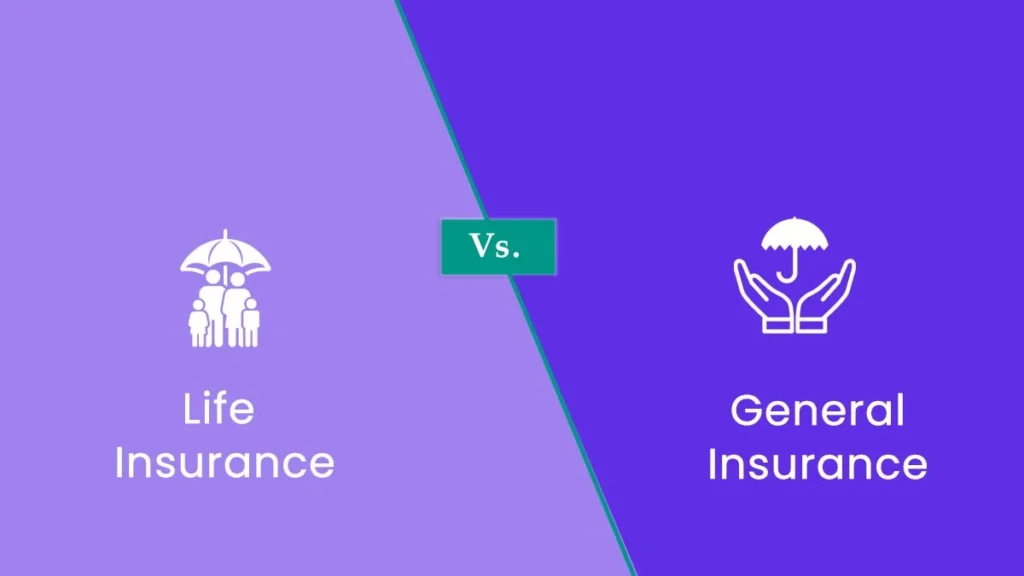Life is full with hazards, and we all need protection from them. While risks cannot be completely avoided, insurance provides the greatest protection by reducing the financial burden associated with any unanticipated incident.
General insurance and life insurance are the two major forms of insurance. Both are equally vital, yet they are not the same. First, let us define life insurance and general insurance.
What Exactly Is Life Insurance?
Life insurance protects you against the danger of death and provides a guarantee to pay a predetermined sum upon death or the expiration of the policy term. It is an agreement between the insured and the insurer in which the insurer promises to pay a specified sum to the beneficiary selected by the insured in return for premiums if the life insured dies. However, some life insurance plans include maturity benefits, which are sums of money paid out to the policy holder if the person insured lives the whole policy term.
What Exactly Is General Insurance?
Non-life insurance, or general insurance, covers any risk other than death, such as health, automobile, and property. It is a contract between the insurer and the insured in which the insurer reimburses the insured for losses to health or assets caused by fire, theft, accident, earthquake, and so on. A general insurance plan does not provide maturity benefits.
Now that we understand what life insurance and general insurance are, let us compare the two and see how they vary.
General Insurance And Life Insurance
The following are some criteria used to compare life insurance with general insurance:
The underlying premise is:
The “Premise of Indemnity,” which pays the financial loss for the incident covered, is the essential underlying principle of a general insurance plan. So, whether it is an accidental insurance plan or a travel-related insurance plan, if the mentioned event, i.e. the accident or travel disaster, occurs, the insurance plan will pay for the financial loss. This theory, however, does not apply to life insurance since the financial loss associated with a death cannot be defined.
Coverage:
Life insurance is a contract between an insurance company and a policyholder that covers the risk of death. General insurance encompasses all other forms of insurance that cover anything other than life, such as health, auto, property, travel, and so on. In certain situations, general insurance policies include coverage for death, however this is not the only objective of the policy.
Coverage Duration:
Life insurance is a long-term contract that provides coverage for many years, while most general insurance policies are short-term contracts that are renewed yearly to provide ongoing coverage.
The Type of Coverage:
Life insurance serves as a safeguard for the financial stability of the policyholder’s family after his death. An indemnity contract that pays for any loss or harm is known as general insurance.
Premium:
Premiums for life insurance are set based on the coverage chosen by the policyholder and are paid on a regular basis throughout the term of the policy, which might be yearly, semi-annually, monthly, in a lump amount, or for a limited time. However, the coverage remains in effect for the duration of the insurance term.
The premium for general insurance varies based on the state of the covered item and is generally paid in lump sum due to the short period.
Compensation:
Compensation in life insurance is known as the “guaranteed amount,” and it is determined by the coverage selected and the total premium paid. It is paid at the policy’s maturity or the occurrence of the covered event, which is generally the death of the life insured. The compensation amount is known as the “insured sum” in general insurance and is paid up to the actual loss, subject to the policy maximum.
Beneficiary:
The beneficiary of life insurance is the person designated by the policyholder to receive the benefit of the claim. It is usually family members, such as spouses or children.
The beneficiary in general insurance is the policyholder, who gets the claim.
Savings:
Some life insurance policies may include a savings component to help you save for the future. There is no such saving element in general insurance policies since there is no maturity benefit.
Tax Advantages
The annualised premium paid towards a life insurance plan is tax-free up to INR 1.5 lakhs per year under section 80C. In contrast, most general insurance plans do not provide this benefit, with the exception of health insurance, which provides a benefit of up to INR 25,000 for a premium paid towards a health plan for self, spouse, and dependent children, as well as an additional amount for a premium paid for dependent parents.
The maturity benefit from life insurance policies is likewise tax-free under section 10(10D), provided the coverage amount is at least ten times the annualised premium. Again, there is no maturity benefit in general insurance policies, thus this benefit is not accessible. Compensation for loss in a general insurance plan, on the other hand, is not taxable in the recipient’s hands, nor is death benefit in the nominee’s hands.
READ ALSO: Savings Life Insurance Plan Launched With Unique Benefits; Check Features, How to Buy
Conclusion
Life insurance and general insurance serve distinct functions, yet both are essential to provide a person with financial stability. Having one does not exclude the necessity for the other. One protects against loss of life, while the other covers against any emergency or loss. To live a stress-free life, learn the distinctions between several forms of insurance and choose the one that best meets your needs. Consult a professional to make an educated choice and effectively protect yourself, your family, and your possessions.


